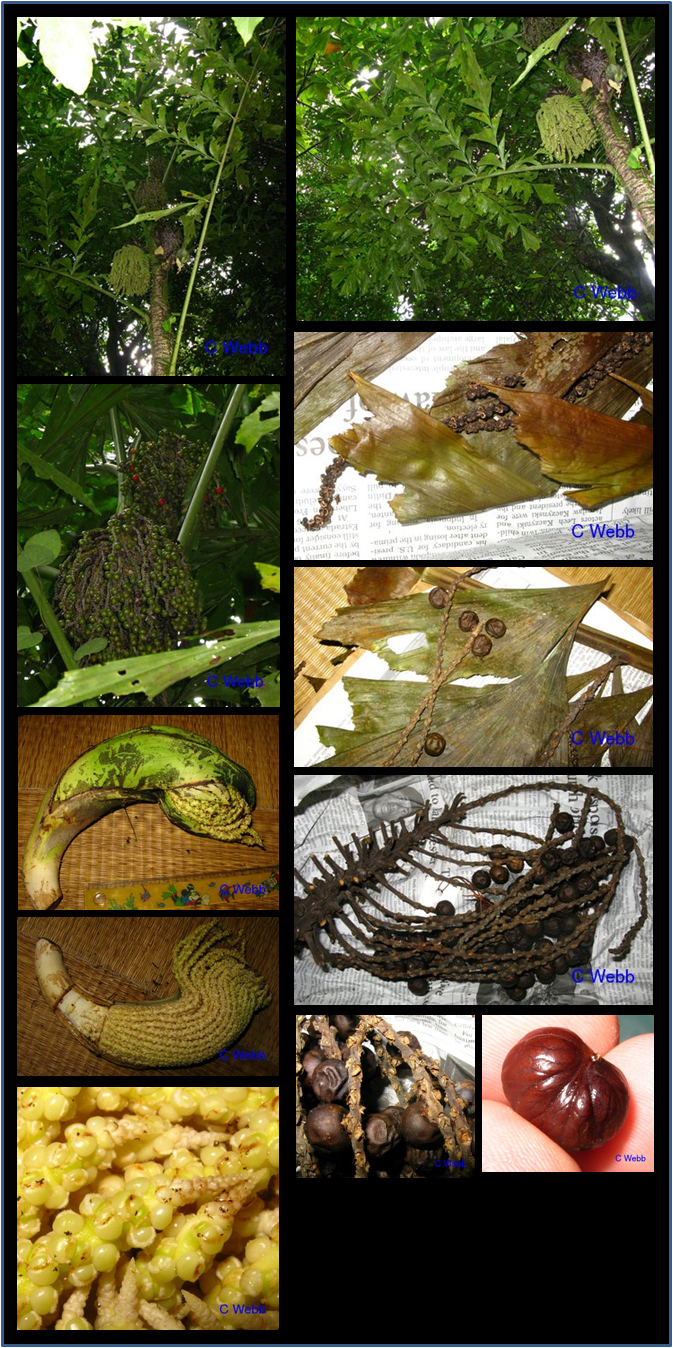Caryota mitis Lour., Fl. Cochinch. 697
Latin for 'soft, gentle, unarmed'.Synonyms
Caryota furfuracea Blume ex Mart.
Caryota griffithii Becc.
Caryota griffithii var. selebica Becc.
Caryota javanica Zipp. ex Miq. [Illegitimate]
Caryota nana Linden
Caryota propinqua Blume ex Mart.
Caryota sobolifera Wall. ex Mart.
Caryota sobolifera Wall.
Caryota speciosa Linden
Drymophloeus zippellii Hassk.
Thuessinkia speciosa Korth.
Description
Palm up to 8 m tall. The palm produces numerous suckers growing from the base. Leaves irregular bi-pinnate that are fan-shaped and jagged at the tip with
many veins, up to 3m long. Infloresences in long bundles from leaf axil. It has a special way of flowering: the first flowering mop-like cluster emerges
from the top of a mature palm, subsequent clusters emerge below and so on. When the cluster reaches the ground, the palm dies. Flowers Small, separate male
and female flowers.The flowers appear in threes, one female flower in between two male ones. Fruits round, green turning blackish-red.
Ecology
Growing in old-growth forest understorey.
Distribution
Native to India, Sri Lanka, and Southeast Asia, but introduced to many other tropical countries.
Uses
In India, an edible starch is extracted from the stem, and the palm heart eaten. Like other palms, it is also tapped for sap which is made into palm sugar
or fermented to make toddy. The fuzz from the young leaves are used as tinder to start a fire. The palm is also used in construction. In India, the leaves
are used for thatching or woven into household items, the fibres from the leaf sheath are made into rope, and seeds made into beads. However, the fruit
and the whole plant can cause severe itching because they contain minute needle-like crystals.
Local names
English: Burmese fishtail palm.
Malaysia: Rabok, Tukas.
